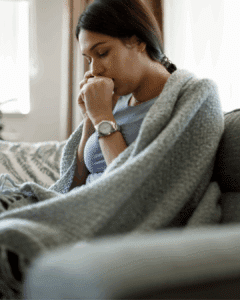
Why Chest Infections and Coughs Flare in Autumn and Winter – And How Homeopathy Can Help
Why Chest Infections and Coughs Flare in Autumn and Winter

One of the trickiest questions for new home prescribers is knowing what to do after the first dose. You’ve given a 30C remedy for an acute situation; maybe a fever, stomach bug, or cough, and now you’re wondering: Should I give another dose? Should I move up to 200C? Or is it the wrong remedy altogether?

Homeopath and CHE Community Manager
The good news is, there are some simple guidelines that can help you feel more confident. Homeopathy is all about careful observation and gentle support. With a little practice, you’ll learn to spot the signs of when to repeat, when to wait, and when to change course.
After giving a 30C dose in an acute case, the first thing to do is observe carefully. Look for changes in:
You only need to repeat a 30C dose when improvement slows down or stops.
Tip: Avoid repeating out of impatience. Only repeat when progress has plateaued.
Sometimes a 30C is not enough, especially if:
In these cases, moving up to 200C may be more effective. This potency has a deeper, stronger action and is often the best choice for acute situations that are very intense.
If there’s no change at all after a few doses of 30C, or if symptoms worsen in a way that doesn’t fit the remedy picture, it’s time to step back.
Ask yourself:
It’s completely normal to need to adjust the prescription as the case develops.
Note: Sometimes symptoms can intensify after giving the right remedy but this will be short-lived and followed by a marked improvement.
Homeopathy is gentle and responsive. By learning when to repeat, when to wait, and when to move up in potency, you’ll grow in confidence as a home prescriber and support your family’s health more effectively.
.
Disclaimer
The content shared here is intended for informational purposes only and should not be considered a replacement for professional medical advice, diagnosis, or treatment from a qualified and licensed healthcare provider. The views and opinions expressed in this presentation are those of the presenter and do not necessarily represent those of CHE or any affiliated organizations.

Why Chest Infections and Coughs Flare in Autumn and Winter

30C or 200C? How to Know What to Do Next

Healing is a Voyage: Following the Patient, Not a Protocol